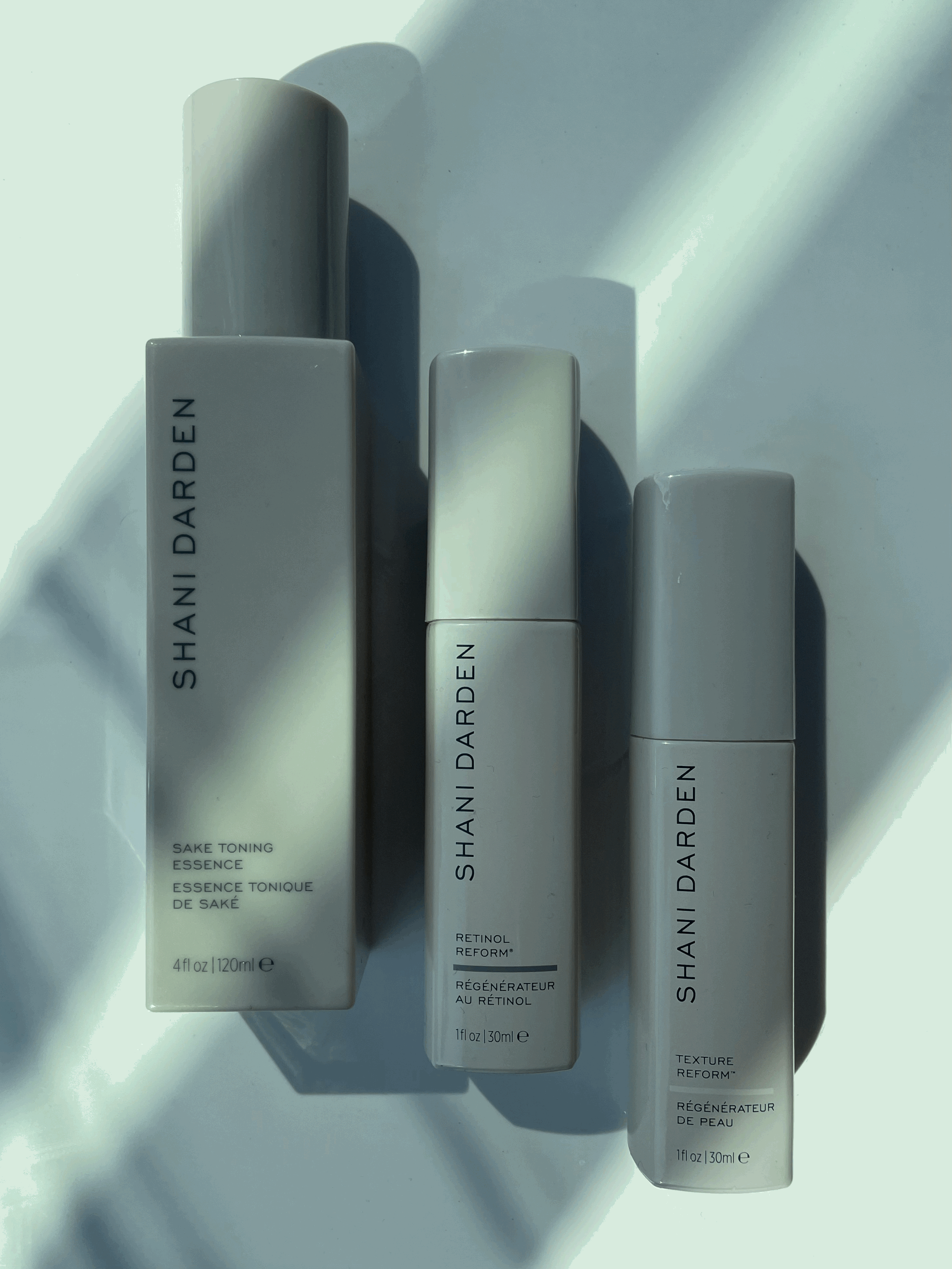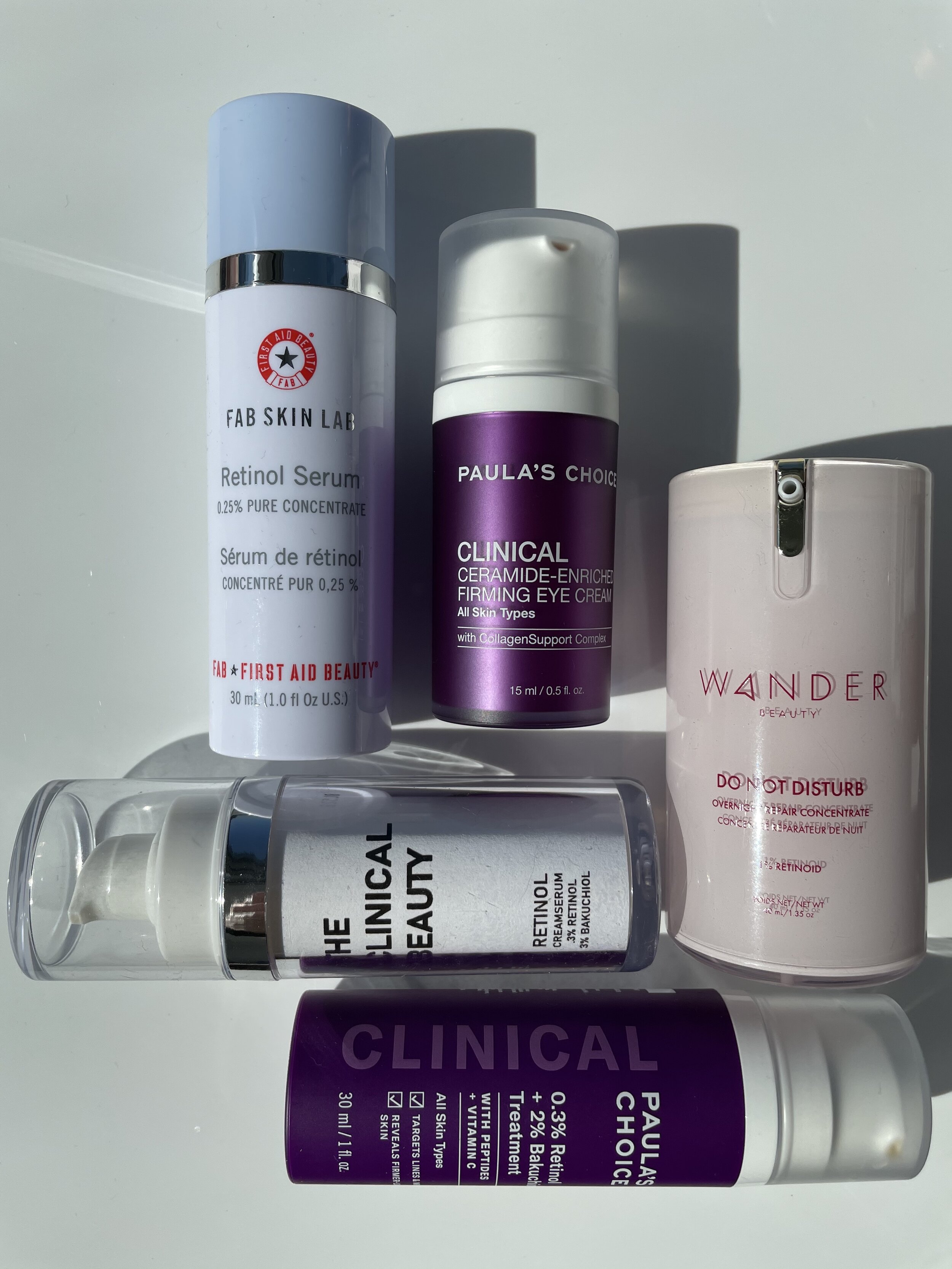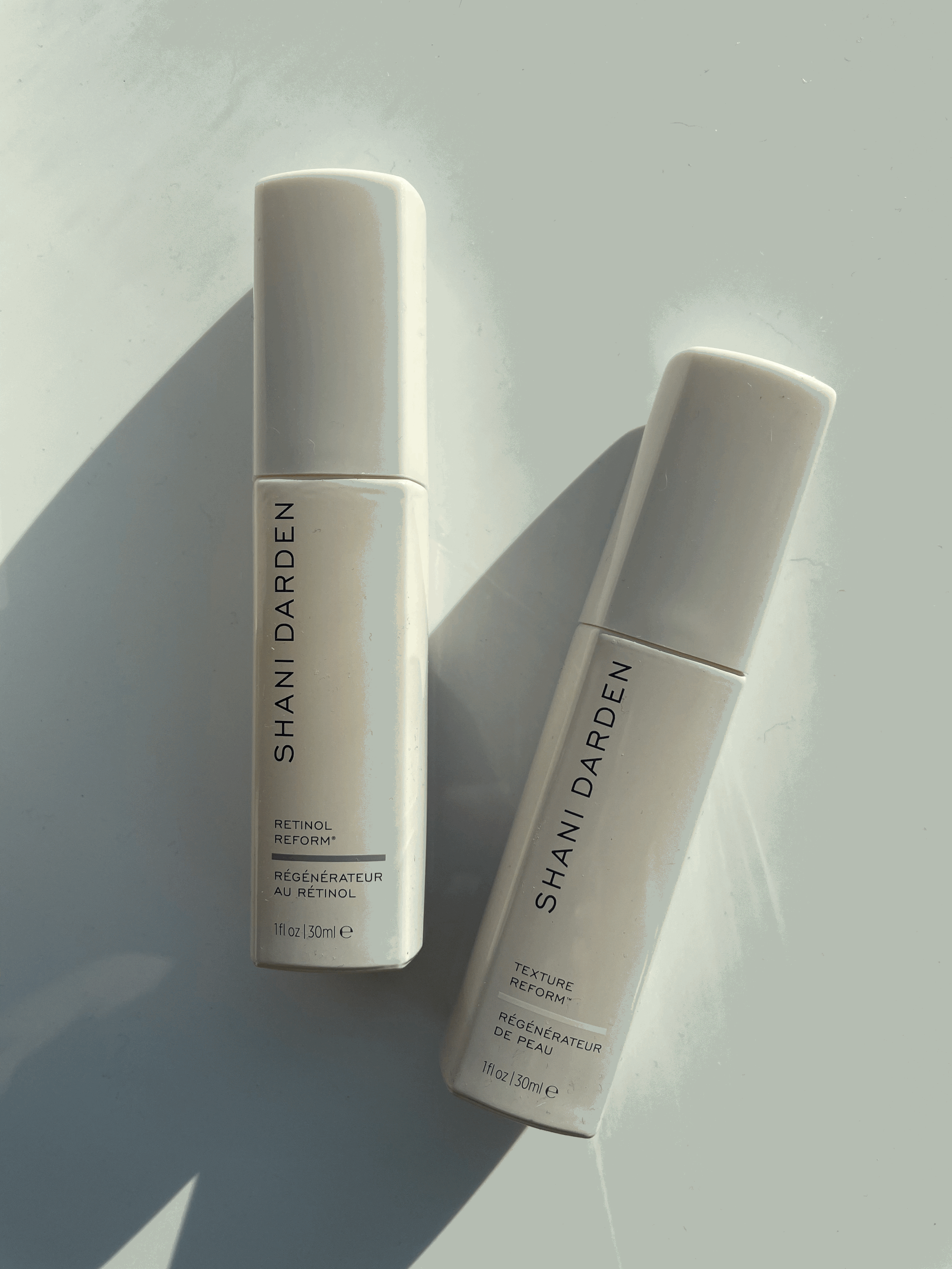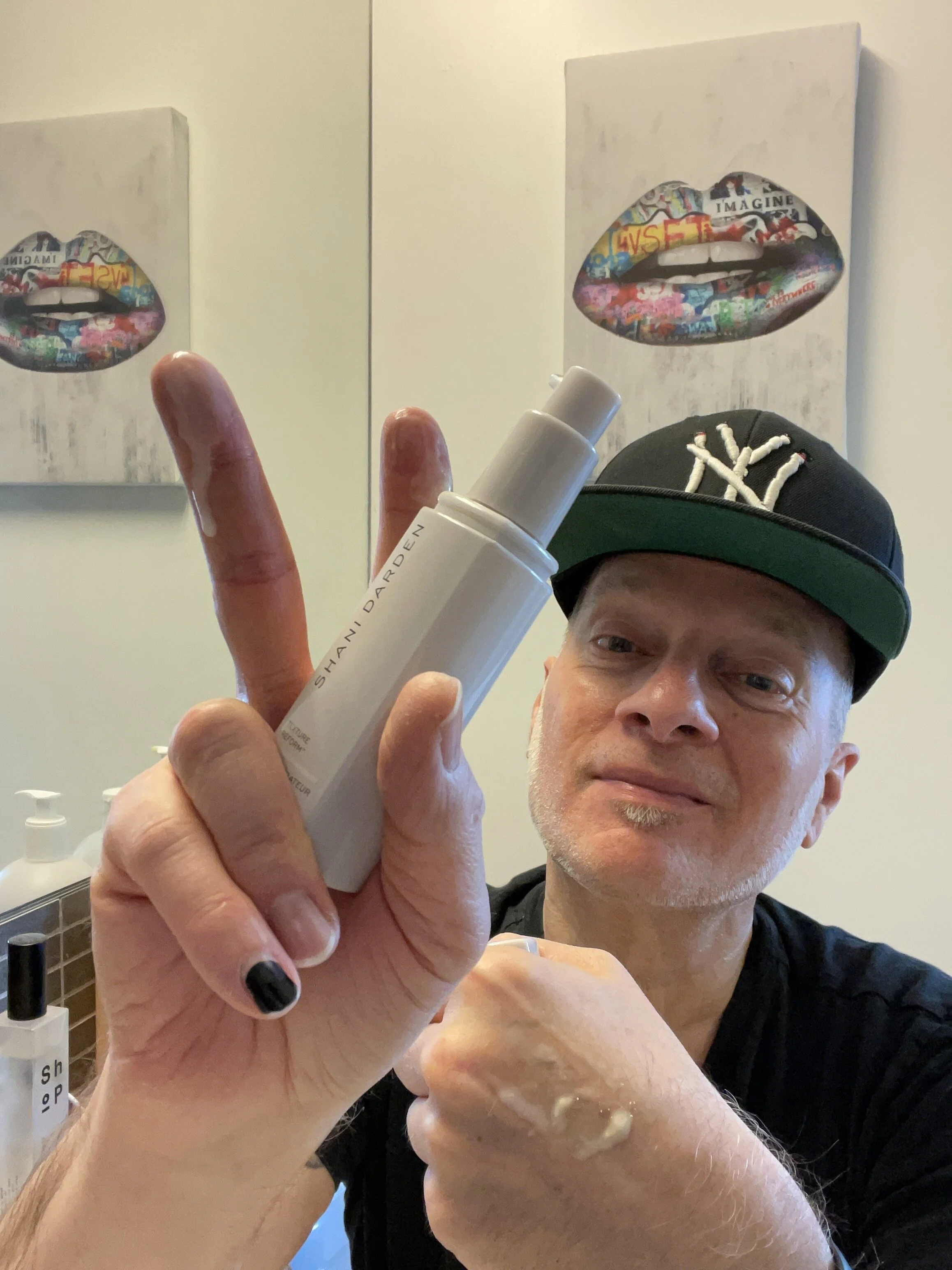PRODUCT REVIEW: SHANI DARDEN SKIN CARE SAKE TONING ESSENCE - BEST FERMENTED TONER, BEST HYDRATING TONER
SHANI DARDEN SKIN CARE | SAKE TONING ESSENCE
This review was originally part of my blog article titled, Brands I Love: Shani Darden Skin Care - Best Retinol Serum, Best Retinol Cream. You can catch the full piece here.
—
A few weeks back, I pulled off what I had long planned — a series of blog articles about all-things-Retinol. I published two consecutive blog articles about the superstar vitamin active that powers some of the best anti-aging serums, best anti-aging creams and best anti-aging eye creams available today.
The first piece in the series was titled, Retinol, Retinoids, Retinoic Acid Part One: Best Retinol Serums, Best Retinol Creams From Paula's Choice, Wander Beauty And First Aid Beauty. In part one, I reviewed what I considered to be the gentler five of my top ten retinoid recommendations — including two innovative face creams that combine Retinol with Bakuchiol.
The second of my two-part series followed a week later. Titled, Retinol, Retinoids, Retinoic Acid Part Two: Best Retinol Serums, Best Retinol Creams from Drunk Elephant, Shani Darden, The Ordinary and More!, it rounded out the ten retinoids I’d grown to appreciate over the past 18 months or so.
RETINOL, RETINOIDS, RETINOIC ACID PART ONE: BEST RETINOL CREAMS FROM PAULA'S CHOICE, FIRST AID BEAUTY AND MORE!
That second collection of retinoids comprised the more powerful of the ten — and one in particular really stood out to me as interesting. The Shani Darden Skin Care Retinol Reform is truly an exceptional retinoid treatment. I had not experienced anything from the Shani Darden Skin Care brand until I came across Retinol Reform and I was intrigued.
I wanted more Shani!
Meet Shani Darden
Shani Darden is an LA-based aesthetician and a true inspiration. I’ve often toyed with starting my own Skincarma Skincare™ but just haven’t gotten there yet. Since my first experience with Shani’s breakout product, Retinol Reform, I’ve tried several other products from her namesake brand and been quite impressed. It’s truly high quality, pro-skin health skin care.
I’m not a big fan of Retinol; I often find it too irritating for my skin. Fortunately for those who are leery of Retinol like me, Shani Darden actually offers two distinct retinoid treatments.
There’s the popular Retinol Reform, a rather potent retinoid treatment; and there’s Texture Reform, a much gentler version formulated with 5% Retinyl Palmitate — the least potent and thus least irritating of the class of retinoids.
Shani’s eponymous brand seemed to come out of no where to reach cult status at Sephora and beyond!
I found a cool, fun piece on the famed aesthetician on Harper’s Bazaar titled, Celebrity Skin Expert Shani Darden Shares Her Nightly Routine.
Shani Darden is Hollywood's favorite expert aesthetician. From starting her career by working with esteemed dermatologist Erma Benitez to earning tenures at Los Angeles clinics like Argyle Salon & Spa and Kinara Skin Care Clinic, she undoubtedly has her own nightly skin care routine down to a T.
In the latest episode of Go to Bed with Me, she shares all the skin care products she can't live without.
So, what was in Shani’s routine? A few familiar products, including her own Retinol Reform serum and, interestingly, the cult Alpha Beta Universal Daily Peel from Dr. Dennis Gross Skincare — which I’ve reviewed previously on the blog here.
PRODUCTS I LOVE : DR. GROSS ALPHA BETA PEELS - BEST ACID TREATMENTS
What Is Retinol and What Does Retinol Do for the Skin?
It’s commonly accepted that Retinol and retinoids, more specifically, are the gold standard in anti-aging. Like Vitamin C and Niacinamide (Vitamin B3), the Vitamin A derivative has multiple pro-skin health, anti-aging benefits. Among them are the smoothing of lines and wrinkles, potent antioxidant defense and visible skin firming. As with Niacinamide, topical retinoids — as all derivatives of Vitamin A are referred to — can even minimize the appearance of pores and defend skin against aging environmental damage.
There’s a superb piece on retinoids by the experts on the Paula’s Choice Research Team titled, The Complete Guide To Retinol: The Anti-Aging (And Anti-Acne) Hero — which you can catch here. Here is what I found most salient:
Retinol is classified as a Cell-Communicating Ingredient, which means that it can tell a skin cell how to behave. Retinol ‘tells’ developing skin cell in the lower layers of the skin – called the dermis, to develop normally, instead of a sun-damaged or genetically malformed skin cell. This is how, over time, Retinol can address multiple skin concerns.
Another way Retinol works is also by telling the older cells in the upper layer of skin to die quicker which in turn allows the newer, healthier skin to surface faster. This quicker skin cell turnover rate, paired with cell communicating abilities is what makes Retinol such a superstar!
There are many derivatives and strengths of retinoids available in both over-the-counter (OTC) and prescription products today. The term “Retinol” is the name of the purest form of Vitamin A, and used most often to refer to the non-prescription version of Retinoids.
However, Retinol itself is not active. It has to go through a conversion process in the skin to get to the active form which is then usable by the skin.
Retinyl Palmitate –> Retinol — > Retinaldehyde –> All-Trans-Retinoic Acid (Tretinoin)
There are many forms of retinoids used in skincare today and it can get confusing. Brands and their formulators have multiple format options in seemingly infinite concentrations, depending on the formulation and the product’s claims positioning. Here is a breakdown of the most common forms with a brief description.
Retinyl Palmitate
This form of Vitamin A is created by combining Retinol, or pure Vitamin A, and palmitic acid – a saturated fatty acid derived from palm oil. Retinyl Palmitate is actually naturally occurring in the skin. Because of the lengthy conversion process required within the skin, it’s the least effective of the retinoids. As the weakest form, it’s also generally the most well tolerated.
Retinyl Palmitate gets a bad rap and is on the clean beauty ingredient hit lists of both Sephora and Credo, meaning a formula that contains it cannot be classified as “clean”. According to the experts on the Paula’s Choice Research Team, the claims that it’s unsafe are “based on a study from nearly 20 years ago that has never been reproduced or tested under real-life conditions such as how people use sunscreens that contain this ingredient.”
Retinol
The term “retinol” has become the catch-all for all forms of retinoids in skincare marketing. To be exact, Retinol is the name for the entire vitamin A molecule and the purest form of the antioxidant vitamin. While its anti-aging benefits are proven, it also has legitimate downsides; notably, Retinol can cause extreme sensitization, irritation, redness, dryness and unsightly flaking of the skin.
What causes Retinol irritation? Well, in order to achieve the unparalleled results of Retinol, the molecule must go through a lengthy molecular transformation in the skin as it converts to retinoic acid. It is this conversion process that causes the significant downsides associated with Retinol.
Ironically, while it’s known for causing skin sensitivity, Retinol is also quite sensitive itself. It needs to be packaged in an opaque, air-tight pump as it easily degrades in the presence of light and air. Just like its BFF Vitamin C!
Retinaldehyde (Retinal)
Retinal is even more potent and effective on the retinoid scale than Retinol itself. Interestingly, “Retinaldehyde has promise in being an anti-acne treatment, without the same harsh side effects of its prescription cousins.”
Because it is perhaps the most expensive of the retinoid class, it’s seldom used in topical skincare products — and is reserved for the savvy marketers who want their Retinol treatment to sound unique and to boast the highest efficacy without a prescription. The default is most often to formulate with the less expensive Retinol. Because of its higher potency, Retinaldehyde is used in lower concentrations, which can give the impression that the formula is weaker from a marketing perspective.
Retinyl Retinoate
This synthetic form of Vitamin A is part of a new generation of retinoids. Because of its slower conversion in the skin into Retinoic Acid, studies have shown it to be less problematic for skin than Retinol and pure form of topical Retinoic Acid — more commonly known as Tretinoin or Retin-A.
Because of the serious downsides of using Retinol, Retinyl Retinoate may become increasingly popular in the years ahead.
Hydroxypinacolone Retinoate (HPR) or Granactive Retinoid
Marketed as Granactive Retinoid, Hydroxypinacolone Retinoate (HPR) is the newest and most promising member of the class of anti-aging retinoids. HPR is an ester of retinoic acid with benefits on par with prescription-strength retinoic acid, commonly known as Tretinoin or Retin-A. The greatest benefit is that HPR is more readily tolerated by the skin, with none of the side effects of Retinol or retinoic acid — including irritation, sensitivity, dryness and flakiness.
How is it possible to have the upside without the downside? In order for the skin to benefit from Retinol, the Vitamin A molecule goes through a transformation process as it converts to retinoic acid in the skin. It is this conversion that leads to the irritation common to Retinol. Hydroxypinacolone retinoate does not require a lengthy conversion in order to achieve the sought-after anti-aging benefits of Retinol, making it far more tolerable.
Tretinoin / Retin-A
With Retinyl Palmitate at the low end of the retinoid scale, Tretinoin (or Retin-A) is at the exact opposite end — the strongest of the retinoids known as retinoic acid, the generic name for synthetic Vitamin A. Tretinoin is only available by prescription in most countries — except notably, Mexico, where its access is quite pervasive. Even I have been caught up in grabbing tubes of Retin-A at the airport before my flights home.
While Tretinoin is commonly used to treat signs of aging including fine lines, wrinkles and dark spots, the versatile medication is also an effective treatment for acne and sun-damaged skin. According to the Healthline website, “It may sound counterintuitive, but tretinoin works by irritating the skin. Tretinoin is able to speed up the life cycle of skin cells. It makes them divide faster and die faster, so newer, healthier cells can take their place.”
The Shani Darden brand offers a nice, well-curated range of skincare essentials. Of course, there are the two retinoids — the Retinol Reform and its more mild mannered sister, Texture Reform.
There’s also the Intensive Eye Renewal Cream with Firming Peptides, which I’ll be reviewing in the coming weeks. But, the one product from Shani’s range that has made me purr like Orpheus is the Shani Darden Skin Care Sake Toning Essence. I LOVE fermented essences and consider them among the best hydrating toners, and essential to my daily skin care routine. (More on this baby below.)
With that, let’s take a look at one product in particular that’s caught my eye — the Shani Darden Skin Care Sake Toning Essence. It’s one of the best fermented toners I’ve ever come across…
Shani Darden Skin Care | Sake Toning Essence
OMG I love toners and essences, but especially fermented ones. There was a time when the SK-II Facial Treatment Essence was literally it — the star of highly active fermented toning essences. It’s still the icon in its class. Does SK-II even sell anything else?
I haven’t tried SK-II’s cult fermented essence in years. But I have enjoyed many, many nourishing toners and essences since. Among them are the COSRX Galactomyces Alcohol-Free Toner, one of the best hydrating toners I’ve come across. The cult classic Benton Fermentation Essence is also a long-time fave. I don’t even know how many bottles of it I’ve been through!
There’s a very fine line between fermented toners, essences and toning essences. And I tend to see them all as product marketing. When these products are well formulated, they’re all pro-skin health, nourishing the skin with fermented actives. It doesn’t matter what they’re called.
PRODUCT REVIEW: BENTON FERMENTATION ESSENCE – ONE OF THE BEST K-BEAUTY PRODUCTS
What Is Fermented Skincare and Does Fermented Skincare Work?
The word "fermentation" derives from the Latin word fervere, meaning "to boil" — as the Romans equated the bubbling and foaming of fermented beverages like beer and wine with boiling. And we know the Romans loved their wine!
According to the California-based Soy Info Center, the process of fermentation is described as "the chemical transformation of organic substances into simpler compounds by the action of enzymes, complex organic catalysts, which are produced by microorganisms such as molds, yeasts, or bacteria."
I found a really insightful piece on the Coveteur website titled, Why Fermented Skin-Care Products Are A Must For Nourished, Glowy Skin. The author offers a solid explanation of the benefits of fermented ingredients for the skin. And notably, she interviews one of my favorite brand founders and former Kiehl’s colleague, Alison Cutlan, founder of Biophile — self-sustaining fermented skincare.
Psst…you can catch my deep dive into Biophile on the blog here.
“Depending on the type of fermentation and the microorganisms, many different metabolites (postbiotics) are created naturally. Often they are rich in nutrients like vitamins, amino acids, lactic acid, polysaccharides, and beta glucans that nourish the body and the immune system,” says Alison Cutlan, founder of Biophile.
How Do Fermented Ingredients Benefit The Skin?
There are a number of benefits that result from fermentation, but the three most important (at least as they relate to your skin) are increased potency, increased penetration, and increased preservation.
According to experts, ingredients are actually more powerful post-fermentation, which can potentially mean more bang for your buck in your skin-care products. Says Palep, “Just like wine, fermentation uses yeast in a natural process to secrete enzymes, which makes the natural ingredients found in fermented skin-care products more potent.”
The argument for increased penetration comes from the fact that fermentation breaks down ingredients into smaller parts. “Because of this chemical reaction, the key ingredients found in fermented skin care tend to be smaller in molecular size, so they may be able to be more readily absorbed by the skin, but the jury is still out,” Palep says. This is often referred to as making the ingredients ‘biocompatible’ or ‘bioavailable,’ a process that also assists with increased potency.
Finally, fermentation can actually increase a product’s shelf life so that you don’t risk your favorite mask or serum spoiling before you use it. “Depending on the type of fermentation, some of the metabolites created are lactic acid, organic acids, and acetic acid (vinegar) that—along with a low pH environment—prevent the growth of pathogenic bacteria,” Cutlan explains.
As its predecessors, many off them fermented icons, the Shani Darden Skin Care Sake Toning Essence is a superb, pro-skin health treatment. Infused with a high concentration of fermented sake water at ingredient number two, it deeply nourishes and hydrates the skin. Use it as a toner, use it as an essence, it doesn’t matter. It’s all good for skin!
There are also humectants Glycerin and Butylene Glycol in the top ten as well as hydrating Rosa Cannina Fruit Extract and even Niacinamide — which I estimate at perhaps a 2-3% concentration.
Is that enough on its own to brighten, strengthen, or retexturize the skin as Niacinamide can do? Not likely. The Shani Darden Skin Care Sake Toning Essence is by no means a replacement for the best Niacinamide serums — like the Paula’s Choice 10% Niacinamide Booster. But, hey you can’t get enough Niacinamide into your routine, IMO.
Beyond that, there are a few antioxidants at lower levels, including Tocopheryl Acetate (Vitamin E) and Camellia Sinensis, Japanese Green Tea Extract. Good stuff!
I love how refreshing Sake Toning Essence is. And, it’s quite gentle on the skin, too. Try it, you’ll love it too!
SHOP THE BLOG: Purchase the Shani Darden Skin Care Sake Toning Essence for $52 here.
The Ingredient List of the Shani Darden Skin Care
Texture Reform:
 so|h, Lactic Acid
so|h, Lactic Acid  exf|h|buff, Retinyl Palmitate cci 1-3 1-3, Hydroxyethyl Acrylate/Sodium Acryloyldimethyl Taurate Copolymer vc, Isohexadecane emo|solv, Polysorbate 60 emu|surf, Potassium Hydroxide buff, Propylene Glycol h|solv|vc 0 0, Glycereth 26 h|emo|vc 0 0, Polyacrylate Crosspolymer-6 vc, Phenethyl Alcohol, Caprylyl Glycol h|emo, Ethylhexyl Glycerin pres, Sodium Pca
exf|h|buff, Retinyl Palmitate cci 1-3 1-3, Hydroxyethyl Acrylate/Sodium Acryloyldimethyl Taurate Copolymer vc, Isohexadecane emo|solv, Polysorbate 60 emu|surf, Potassium Hydroxide buff, Propylene Glycol h|solv|vc 0 0, Glycereth 26 h|emo|vc 0 0, Polyacrylate Crosspolymer-6 vc, Phenethyl Alcohol, Caprylyl Glycol h|emo, Ethylhexyl Glycerin pres, Sodium Pca  sii|h 0 0, Coffea Arabica (Coffee) Fruit Extract aox, Beta-Glucan
sii|h 0 0, Coffea Arabica (Coffee) Fruit Extract aox, Beta-Glucan  so|h, Hydrolyzed Soybean Palmitate, Acetyl Glucosamine
so|h, Hydrolyzed Soybean Palmitate, Acetyl Glucosamine  sii|sb, Niacinamide
sii|sb, Niacinamide  cci|sb|aacne|h
cci|sb|aacne|hThe Ingredient List of the Shani Darden Skin Care Retinol Reform:
 sii|h 0 0, Pyrus Malus (Apple) Fruit Extract
sii|h 0 0, Pyrus Malus (Apple) Fruit Extract  h, Lactic Acid
h, Lactic Acid  exf|h|buff, Hydroxyethyl Acrylate/Sodium Acryloyldimethyl Taurate Copolymer vc, Lactobacillus Ferment
exf|h|buff, Hydroxyethyl Acrylate/Sodium Acryloyldimethyl Taurate Copolymer vc, Lactobacillus Ferment  so|pres, Isohexadecane emo|solv, Retinol
so|pres, Isohexadecane emo|solv, Retinol  cci, Copernicia Cerifera Cera (Copernicia Cerifera (Carnauba) Wax, Cire De Carnauba) emo 0 1, Glucosamine Hcl, Plankton Extract, Camellia Sinensis Leaf Extract
cci, Copernicia Cerifera Cera (Copernicia Cerifera (Carnauba) Wax, Cire De Carnauba) emo 0 1, Glucosamine Hcl, Plankton Extract, Camellia Sinensis Leaf Extract  aox|so, Aloe Barbadensis Leaf Juice
aox|so, Aloe Barbadensis Leaf Juice  so|h, Tocopheryl Acetate aox 0 0, Niacinamide
so|h, Tocopheryl Acetate aox 0 0, Niacinamide  cci|sb|aacne|h, Hydrogenated Lecithin
cci|sb|aacne|h, Hydrogenated Lecithin  emo|emu, Linoleic Acid
emo|emu, Linoleic Acid  sii|emo|surf, Glycine Soja (Soybean) Sterols emo, Phospholipids
sii|emo|surf, Glycine Soja (Soybean) Sterols emo, Phospholipids  sii|emo, Propanediol solv|h, Sodium Cocoamphoacetate surf, Sorbitan Isostearate emu 0 1-2, Polysorbate 60 emu|surf, Oryza Sativa (Rice) Bran Extract, Rosmarinus Officinalis (Rosemary) Leaf Extract
sii|emo, Propanediol solv|h, Sodium Cocoamphoacetate surf, Sorbitan Isostearate emu 0 1-2, Polysorbate 60 emu|surf, Oryza Sativa (Rice) Bran Extract, Rosmarinus Officinalis (Rosemary) Leaf Extract  aox|so|amic, Helianthus Annuus (Sunflower) Extract
aox|so|amic, Helianthus Annuus (Sunflower) Extract  so|emo, Tocopherol
so|emo, Tocopherol  aox 0-3 0-3, Cyamopsis Tetragonoloba,(Guar) Gum vc, Maltodextrin, Xanthan Gum vc, Lecithin
aox 0-3 0-3, Cyamopsis Tetragonoloba,(Guar) Gum vc, Maltodextrin, Xanthan Gum vc, Lecithin  emo|emu, Hydrolyzed Algin, Xylitylglucoside
emo|emu, Hydrolyzed Algin, Xylitylglucoside  h, Anhydroxylitol
h, Anhydroxylitol  h, Xylitol
h, Xylitol  h, Tetrasodium Glutamate Diacetate chel, BHT aox|pres, BHA
h, Tetrasodium Glutamate Diacetate chel, BHT aox|pres, BHA  aox|pres, Sodium Hydroxide buff, Phenoxyethanol pres, Caprylyl Glycol h|emo, Ethylhexylglycerin pres, Hexylene Glycol solv|emu|perf|surf 0-1 0-2
aox|pres, Sodium Hydroxide buff, Phenoxyethanol pres, Caprylyl Glycol h|emo, Ethylhexylglycerin pres, Hexylene Glycol solv|emu|perf|surf 0-1 0-2The Ingredient List of the Shani Darden Skin Care
Sake Toning Essence:
 so|h, Glycerin
so|h, Glycerin  sii|h 0 0, Rosa Canina Fruit Extract, Butylene Glycol h|solv|vc 0 1, Niacinamide
sii|h 0 0, Rosa Canina Fruit Extract, Butylene Glycol h|solv|vc 0 1, Niacinamide  cci|sb|aacne|h, Phenoxyethanol pres, Isoceteth-20 emu|surf, Xanthan Gum vc, Aminopropyl Ascorbyl Phosphate
cci|sb|aacne|h, Phenoxyethanol pres, Isoceteth-20 emu|surf, Xanthan Gum vc, Aminopropyl Ascorbyl Phosphate  aox|sb, Tetrasodium Glutamate Diacetate chel, Tocopheryl Acetate (Vitamin E) aox 0 0, Natural Fragrance
aox|sb, Tetrasodium Glutamate Diacetate chel, Tocopheryl Acetate (Vitamin E) aox 0 0, Natural Fragrance  perf, Camellia Sinensis (Green Tea) Japanese, Ethylhexylglycerin pres, Citric Acid buff
perf, Camellia Sinensis (Green Tea) Japanese, Ethylhexylglycerin pres, Citric Acid buff



















